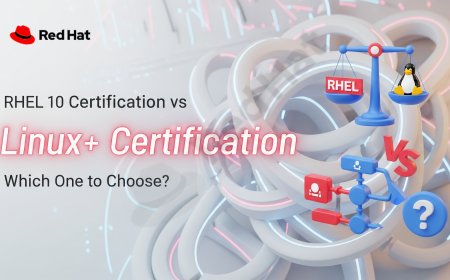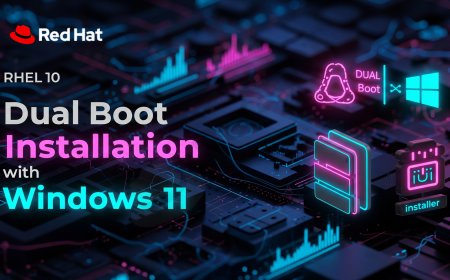What Are the Top Open-Source Threat Intelligence Platforms You Should Know in 2025?
In 2025, leveraging threat intelligence is key to defense. This guide reviews the top open-source threat intelligence platforms (TIPs) like MISP and OpenCTI, helping security teams turn data into action without breaking the budget. This analysis, written from Pune, India in July 2025, provides a comprehensive guide to the leading open-source threat intelligence platforms. It explains the critical role of these tools in moving from manual data collection to automated, intelligence-driven defense. The article features a detailed comparison of top platforms including MISP, OpenCTI, and Yeti, outlining their key strengths and ideal use cases. It also covers the challenges of operationalizing intelligence and best practices for successful deployment, offering a roadmap for organizations looking to build a powerful, cost-effective threat intelligence program.

Table of Contents
- Introduction
- From Manual Spreadsheets to Automated Platforms
- Why Open-Source Intelligence is Critical in 2025
- Core Functions of a Threat Intelligence Platform
- 2025 Review: Top Open-Source Threat Intelligence Platforms
- The 'So What?' Problem: From Intelligence to Action
- The Growing Role of AI in Open-Source Intelligence
- Best Practices for Deploying an Open-Source TIP
- Conclusion
- FAQ
Introduction
In today's hyper-connected threat landscape, security teams are drowning in data. They face a constant barrage of threat feeds, security blogs, government alerts, and Indicators of Compromise (IOCs). Making sense of this firehose of information is a monumental task. While commercial threat intelligence platforms offer powerful solutions, their cost can be prohibitive for many organizations. This is where the open-source community has stepped up, providing powerful, flexible, and cost-effective tools. For security teams in India and around the world looking to build an intelligence-driven defense, the question is: What are the top open-source threat intelligence platforms you should know in 2025?
From Manual Spreadsheets to Automated Platforms
Not long ago, managing threat intelligence was a painfully manual process. Analysts would copy and paste IOCs—like malicious IP addresses or file hashes—from blog posts and security reports into massive spreadsheets or text files. This approach was slow, error-prone, impossible to scale, and made it extremely difficult to see the relationships between different threats. A modern Threat Intelligence Platform (TIP) automates this entire workflow. It automatically ingests data from various feeds, normalizes and de-duplicates it, helps analysts correlate it to find larger campaigns, and then disseminates actionable intelligence to other security tools.
Why Open-Source Intelligence is Critical in 2025
The adoption of open-source TIPs has accelerated this year for several compelling reasons:
- The Power of Community Defense: Open-source platforms, particularly MISP, are built around the idea of sharing. They enable organizations to collaborate and share threat intelligence within trusted circles (e.g., within the financial sector or a specific geographic region), strengthening everyone's defenses.
- Budget Constraints: As security budgets tighten, CISOs are looking for high-ROI solutions. Open-source TIPs provide enterprise-grade capabilities without the high licensing fees of commercial alternatives.
- The Need to Operationalize Intelligence: Simply knowing about a threat is useless. The primary goal is to use that intelligence to block attacks. Open-source platforms provide the APIs needed to integrate with and automatically update blocklists on firewalls, SIEMs, and EDR tools.
- Flexibility and Customization: Open-source tools offer unparalleled flexibility, allowing organizations to customize them to fit their specific workflows and intelligence requirements.
Core Functions of a Threat Intelligence Platform
At their core, all effective TIPs, whether open-source or commercial, perform four key functions:
- 1. Aggregation: Ingesting structured and unstructured threat data from a wide variety of sources, including open-source feeds (like AlienVault OTX), commercial feeds, government alerts (like from CERT-In), and internal security tools.
- 2. Normalization and Enrichment: Converting all the data into a standardized format (like STIX) and enriching it with additional context. For example, taking an IP address and adding geolocation data or reputation scores.
- 3. Analysis and Correlation: Providing tools for human analysts to explore the data, visualize relationships between indicators, and correlate seemingly disparate events into identifiable threat campaigns.
- 4. Dissemination and Integration: Sharing the curated, actionable intelligence with other security systems (via APIs) or with human stakeholders (through reports and dashboards).
2025 Review: Top Open-Source Threat Intelligence Platforms
While many projects exist, a few have emerged as the clear leaders in the open-source space for their maturity, features, and strong community support:
| Platform | Key Strength / Philosophy | Best Suited For | Potential Challenge |
|---|---|---|---|
| MISP (Malware Information Sharing Platform) | Collaboration & Sharing. Built from the ground up to facilitate the sharing of threat intelligence within trusted communities (ISACs, ISAOs). | Government agencies, industry sharing groups, and organizations that prioritize collaborative defense. | The user interface can feel dated and less intuitive compared to more modern platforms. Can be complex to set up initially. |
| OpenCTI (Open Cyber Threat Intelligence) | Data Structuring & Relationships. Excels at structuring data according to STIX 2 standards and visualizing the complex relationships between threats. | Threat analysts and hunters who need to understand the "who, what, and why" behind an attack, not just the IOCs. | Requires a significant amount of system resources (RAM, CPU) to run effectively, especially with large datasets. |
| Yeti (Your Everyday Threat Intelligence) | Speed & Observables. A "single source of truth" for observables (IPs, domains, etc.). It's incredibly fast and focuses on enriching and contextualizing individual data points. | SOCs that need a highly performant, centralized repository for all their threat observables and want to quickly answer "Have we seen this before?" | Less focused on high-level campaign tracking and relationship analysis compared to OpenCTI. More of an encyclopedia than an analysis workbench. |
| CRITS (Collaborative Research Into Threats) | Legacy & Extensibility. One of the original open-source TIPs. While development has slowed, it remains a stable and highly extensible platform for malware analysis. | Organizations with existing CRITS deployments or those with specific malware analysis workflows who need a highly customizable backend. | No longer actively developed by its original creators, and the community is smaller. Not recommended for new deployments. |
The 'So What?' Problem: From Intelligence to Action
The single biggest challenge with any TIP deployment, and especially with open-source tools, is bridging the gap between having intelligence and acting on it. It is not enough to simply collect a million malicious IP addresses. An organization must have the engineering resources and processes to:
- Curate the data: Not all intelligence is high-quality. You need analysts to validate and prioritize the data.
- Integrate with your stack: You must build and maintain integrations to automatically push blocklists to your firewalls, EDRs, and SIEMs.
- Automate workflows: The goal is to create automated workflows, for example, where a high-confidence indicator from the TIP automatically creates a ticket in your SOAR platform for investigation.
Without this focus on operationalization, a TIP can quickly become an "intelligence graveyard"—a database full of interesting but unused information.
The Growing Role of AI in Open-Source Intelligence
Recognizing the challenge of data overload, the leading open-source TIPs are increasingly incorporating AI and machine learning capabilities. These are not yet full-blown predictive engines, but they provide powerful assistance to human analysts:
- Threat Clustering: AI can analyze thousands of malware samples or indicators and automatically group them into clusters that likely belong to the same campaign or threat actor.
- Relationship Discovery: By processing unstructured data from security blogs, AI can help automatically extract relationships (e.g., "Malware X uses Domain Y for C2") and add them to the knowledge graph in OpenCTI.
- Confidence Scoring: Machine learning models can be used to assign a confidence score to a piece of intelligence based on its source, age, and relationship to other known threats.
Best Practices for Deploying an Open-Source TIP
For an organization in India considering deploying a platform like MISP or OpenCTI, a strategic approach is essential for success:
- 1. Define Your Intelligence Requirements (IRs): Before you install anything, clearly define what questions you need your intelligence program to answer. Are you focused on phishing, ransomware, or threats specific to the Indian banking sector?
- 2. Start Small and Curate: Don't try to ingest every threat feed on day one. Start with a few, high-quality, trusted feeds (like from CERT-In or a reputable security firm). Quality over quantity is key.
- 3. Dedicate Personnel: An open-source TIP is not a "set-and-forget" tool. It requires dedicated analysts to manage the platform, curate the data, and investigate findings.
- 4. Focus on Integration from the Start: Make API integration with your SIEM and firewall your primary goal. The value of the TIP is directly proportional to how well it is operationalized.
Conclusion
In the face of increasingly automated and sophisticated threats, leveraging threat intelligence is no longer optional. Open-source platforms like MISP and OpenCTI have democratized this capability, offering powerful tools that allow any organization to build a mature, intelligence-driven security program. While they require a significant investment in time and technical expertise to set up and maintain, their flexibility, collaborative features, and cost-effectiveness make them a cornerstone of modern defense. For security teams willing to make the commitment, these platforms provide an unparalleled ability to understand the threat landscape and proactively defend against the attacks of tomorrow.
FAQ
What is a Threat Intelligence Platform (TIP)?
A TIP is a software solution that collects, aggregates, correlates, and analyzes threat intelligence data from multiple sources. It helps security teams turn raw threat data into actionable defensive measures.
What is the difference between open-source and commercial TIPs?
Open-source TIPs are free to use and can be customized, but require significant in-house expertise to deploy and maintain. Commercial TIPs come with licensing fees but include vendor support, managed services, and pre-built integrations.
What is MISP?
MISP (Malware Information Sharing Platform) is a leading open-source TIP focused on facilitating the sharing of Indicators of Compromise (IOCs) within trusted communities. It is heavily used by government CERTs and industry sharing groups (ISACs).
What is OpenCTI?
OpenCTI is an open-source TIP designed to help organizations structure, store, and visualize cyber threat intelligence. It excels at mapping the relationships between threat actors, campaigns, malware, and vulnerabilities.
What are Indicators of Compromise (IOCs)?
IOCs are pieces of digital evidence or forensic data that indicate a potential intrusion on a network. Examples include malicious IP addresses, domain names, file hashes, or unusual network traffic.
What are STIX and TAXII?
STIX (Structured Threat Information eXpression) is a standardized language for describing threat intelligence. TAXII (Trusted Automated eXchange of Intelligence Information) is a protocol for securely sharing that information. They are the foundational standards for threat intelligence sharing.
What is an ISAC or ISAO?
An ISAC (Information Sharing and Analysis Center) or ISAO (Information Sharing and Analysis Organization) is a group of organizations within a specific industry (e.g., finance, energy) that collaborate to share threat intelligence and defend against common threats.
Can I use these platforms for OSINT (Open-Source Intelligence)?
Yes. These platforms are ideal for aggregating data from publicly available OSINT feeds, such as security blogs, Twitter feeds, and public IOC repositories like AlienVault OTX.
What skills do I need to run a TIP?
You need a combination of skills: system administration (for deployment and maintenance), cybersecurity analysis (to understand and curate the data), and often some scripting or software development skills (for API integration).
What is "threat enrichment"?
Enrichment is the process of adding context to a raw piece of intelligence. For example, taking a malicious IP address and adding information about its geographic location, its hosting provider, and other malware campaigns it has been associated with.
How much does it cost to run an open-source TIP?
While the software is free, there are costs for the underlying infrastructure (servers, cloud hosting) and, most importantly, the salaries of the dedicated personnel required to manage the platform effectively.
What is a "threat feed"?
A threat feed is a continuous stream of threat intelligence data provided by a security vendor, government agency, or open-source project. TIPs are designed to subscribe to and process these feeds.
What does it mean to "operationalize" intelligence?
It means taking a piece of intelligence and using it to take a concrete defensive action automatically. For example, taking a malicious domain from your TIP and automatically adding it to your DNS sinkhole or web filter's blocklist.
Is a TIP the same as a SIEM?
No. A SIEM (Security Information and Event Management) collects and analyzes internal log data from your own network. A TIP collects and analyzes external threat data from the outside world. The two systems are most powerful when integrated.
What is a "knowledge graph" in OpenCTI?
It is a database model that stores intelligence not just as individual items, but as a network of connected entities. It allows an analyst to easily visualize the relationships between a threat actor, the malware they use, the campaigns they run, and the vulnerabilities they exploit.
Do I need a TIP if I'm a small business?
For very small businesses, a full TIP might be overkill. However, subscribing to a high-quality threat feed and ensuring your firewall or security provider can ingest it is a good first step.
Where can I find open-source threat feeds to use?
There are many. A good starting point is the firehose feed from AlienVault OTX. Many security vendors and researchers also share feeds on platforms like GitHub.
How does a TIP help with threat hunting?
A TIP provides a rich, contextualized database for threat hunters. A hunter can start with a single IOC and use the platform to pivot and discover all related infrastructure, malware, and threat actors, uncovering the full scope of a campaign.
What does CERT-In stand for?
CERT-In is the Indian Computer Emergency Response Team, the national nodal agency in India for responding to cybersecurity incidents and providing threat intelligence.
Is it difficult to contribute data back to the community?
Platforms like MISP make it very easy. They are designed with granular sharing controls, allowing you to easily share an indicator you discovered with a trusted partner or the wider community with just a few clicks.
What's Your Reaction?
 Like
0
Like
0
 Dislike
0
Dislike
0
 Love
0
Love
0
 Funny
0
Funny
0
 Angry
0
Angry
0
 Sad
0
Sad
0
 Wow
0
Wow
0















